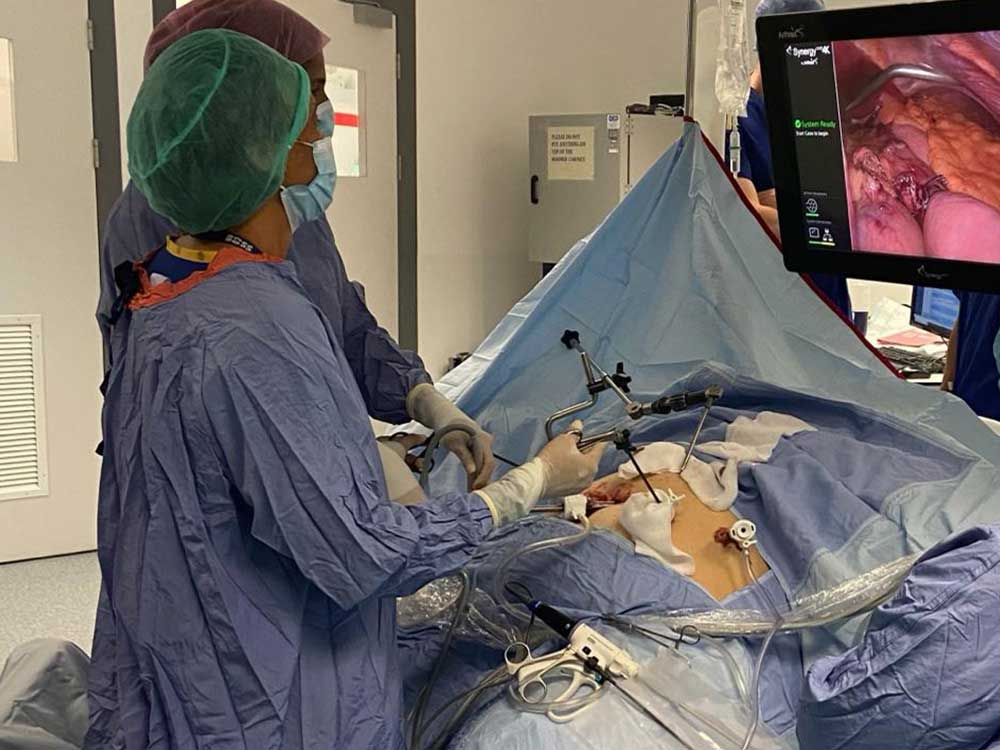Gastric balloon
Gallstones Surgery
Gallstones occur when bile, which is normally fluid, forms stones.
They commonly contain lumps of cholesterol-like (fatty) material that has solidified and hardened. Sometimes bile pigments or calcium deposits form gallstones. Sometimes just a few small stones are formed; sometimes a great many. Occasionally, just one large stone is formed.
Gallstones also become more common with increasing age. The risk of forming gallstones increases with pregnancy, obesity, rapid weight loss, having a close relative with gallstones, diabetes and if you take certain medicines such as the contraceptive pill.
Surgery
Once gallstones start giving symptoms, surgery is the best treatment. An operation to remove the gallbladder is the usual treatment.
Different techniques to remove the gallbladder may be recommended depending on its site, size, and other factors. Keyhole surgery is now the most common way to remove a gallbladder, called laparoscopic cholecystectomy. It is called keyhole surgery as only small cuts are needed in the abdomen with small scars remaining afterwards. The operation is done with the aid of a special telescope that is pushed into the abdomen through one small cut. This allows the surgeon to see the gallbladder. Instruments pushed through another small cut are used to cut out and remove the gallbladder.
- Keyhole surgery is not suitable for all people.
- Some people with gallstones need a traditional operation to remove the gallbladder. This is called cholecystectomy. In this operation a larger cut is needed to get at the gallbladder.
- Other surgical procedures like ERCP may be needed if a stone gets stuck in the bile duct.
Gallstones Surgery
Gallstones occur when bile, which is normally fluid, forms stones.
They commonly contain lumps of cholesterol-like (fatty) material that has solidified and hardened. Sometimes bile pigments or calcium deposits form gallstones. Sometimes just a few small stones are formed; sometimes a great many. Occasionally, just one large stone is formed.
Gallstones also become more common with increasing age. The risk of forming gallstones increases with pregnancy, obesity, rapid weight loss, having a close relative with gallstones, diabetes and if you take certain medicines such as the contraceptive pill.
Surgery
Once gallstones start giving symptoms, surgery is the best treatment. An operation to remove the gallbladder is the usual treatment.
Different techniques to remove the gallbladder may be recommended depending on its site, size, and other factors. Keyhole surgery is now the most common way to remove a gallbladder, called laparoscopic cholecystectomy. It is called keyhole surgery as only small cuts are needed in the abdomen with small scars remaining afterwards. The operation is done with the aid of a special telescope that is pushed into the abdomen through one small cut. This allows the surgeon to see the gallbladder. Instruments pushed through another small cut are used to cut out and remove the gallbladder.
- Keyhole surgery is not suitable for all people.
- Some people with gallstones need a traditional operation to remove the gallbladder. This is called cholecystectomy. In this operation a larger cut is needed to get at the gallbladder.
- Other surgical procedures like ERCP may be needed if a stone gets stuck in the bile duct.

